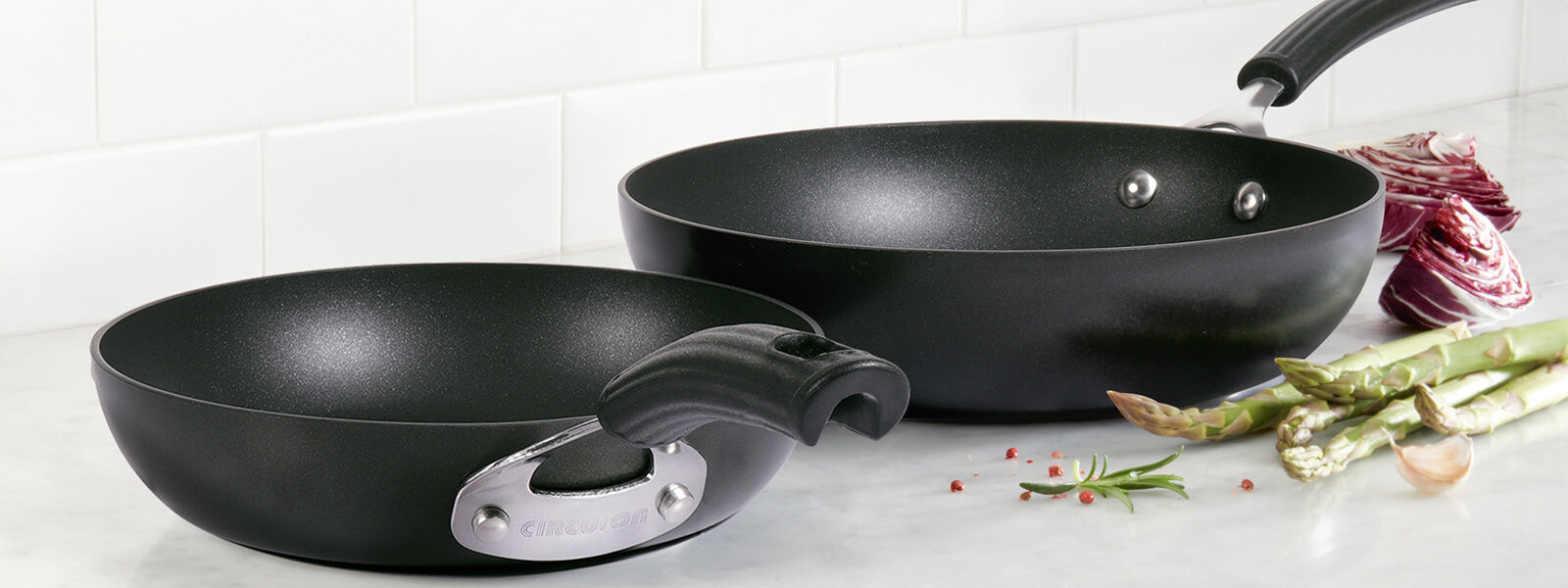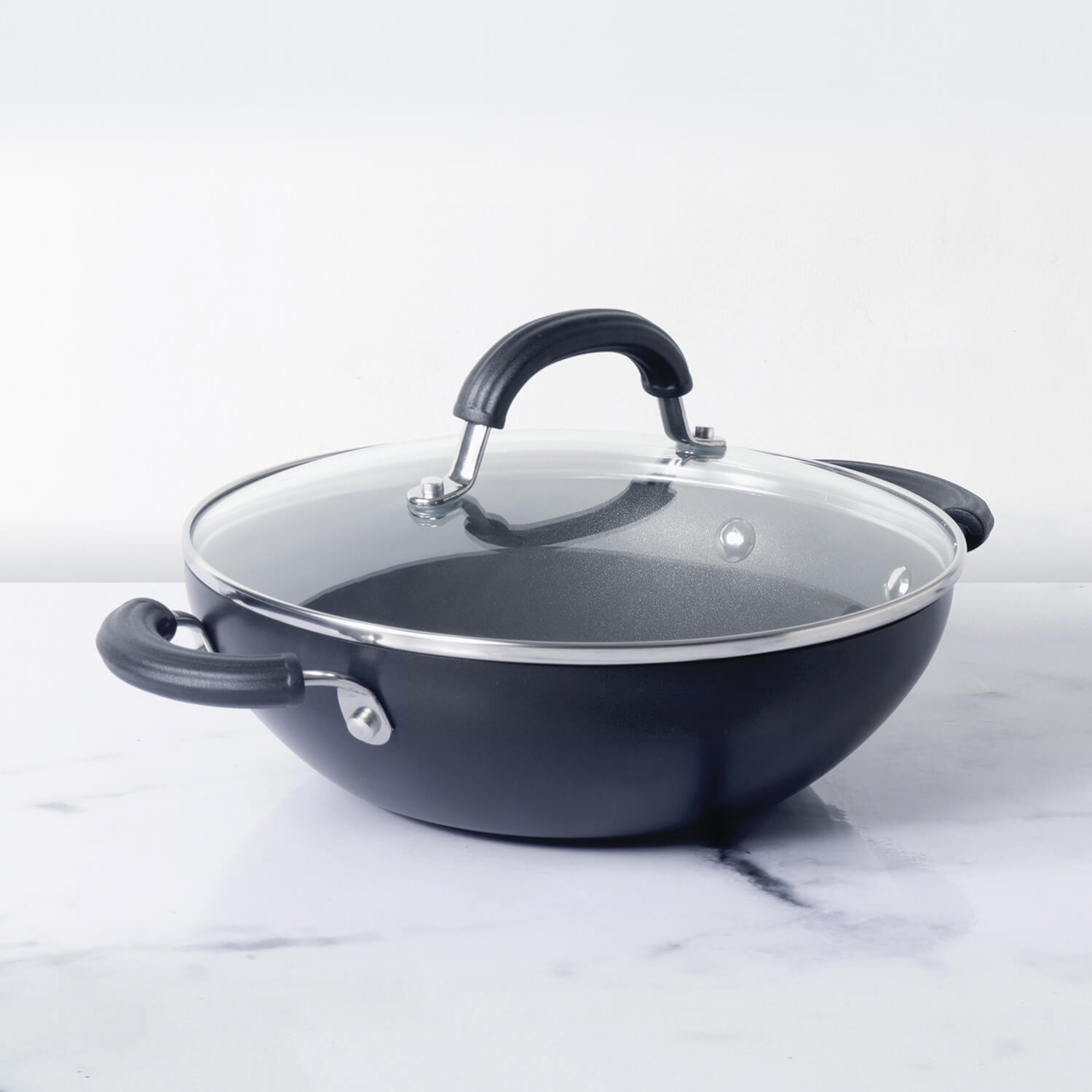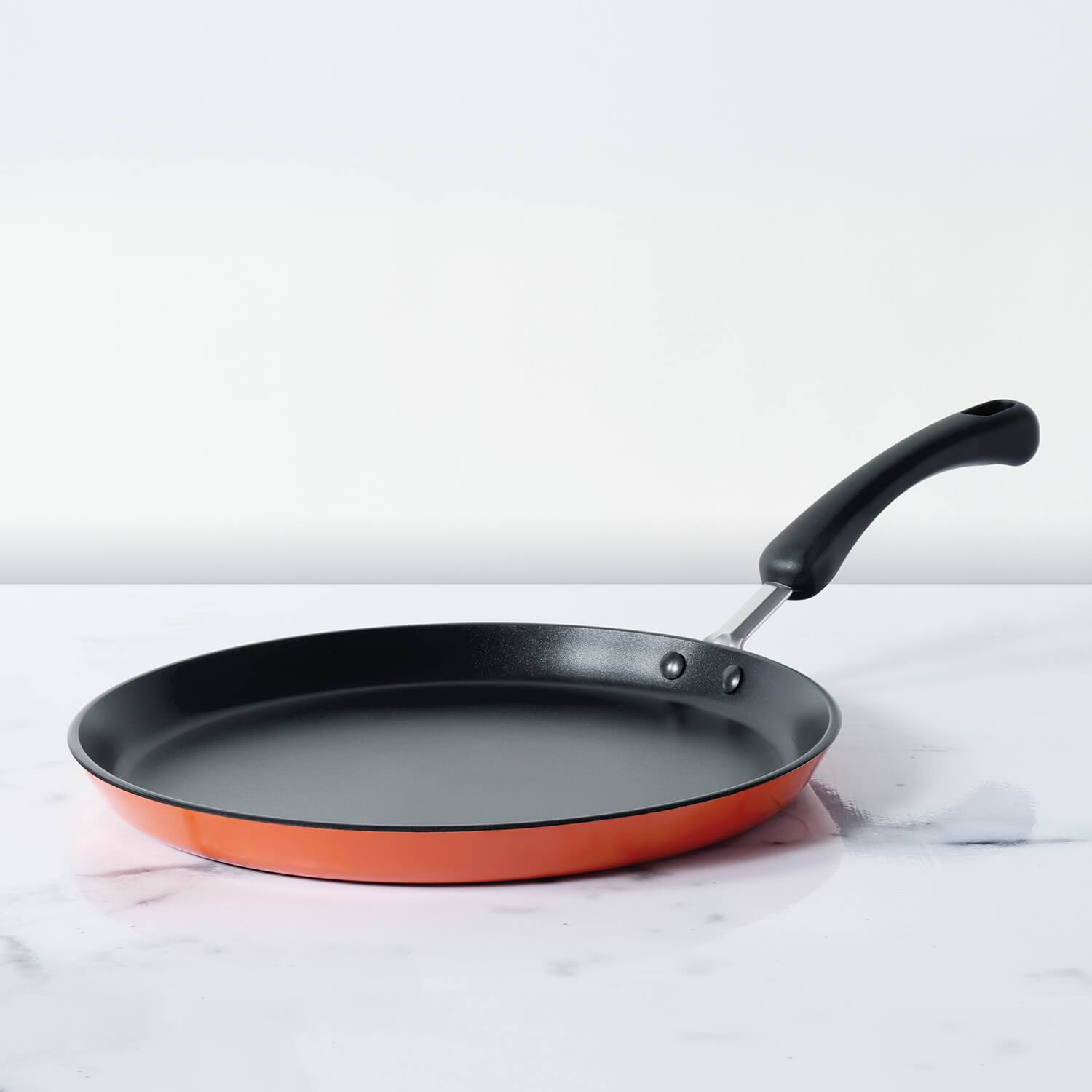Less is more, when it comes to using oil while cooking in a nonstick cookware. The benefits of using less oil are plenty and ways to accomplish this slightly daunting seeming task are also easy. To minimize oil usage while cooking with nonstick cookware, start by preheating the pan properly on medium heat to prevent food from sticking. Opt for healthy cooking sprays and use them sparingly, holding the canister at a distance to create a fine mist. Additionally, utilize the natural juices and liquids of ingredients such as vegetables and proteins to add moisture and flavor to dishes without the need for excess oil. Consider alternative cooking methods like steaming or poaching, which eliminate the need for oil altogether while preserving the natural taste and texture of the food. Finally, invest in high-quality nonstick cookware with durable coatings and even heat distribution to ensure efficient cooking with minimal oil usage. By incorporating these practical tips into your cooking routine, you can enjoy healthier and more flavorful meals without sacrificing taste or texture.
Table of Contents
Preheat Nonstick Properly:
Properly preheating your nonstick cookware is crucial for reducing the amount of oil needed when cooking. Here's how to do it effectively:
- Preheat on Medium Heat: Start by preheating your nonstick pan on a medium heat setting. Avoid using high heat, as this can cause the oil to smoke and burn, leading to a less pleasant taste and potentially damaging the nonstick coating of the pan.
- Allow Sufficient Time: Give your nonstick pan enough time to heat up thoroughly before adding any ingredients. Depending on the thickness of the pan and the type of stovetop you're using (gas, electric, induction, etc.), this usually takes a few minutes.
- Check for Readiness: To test if the pan is properly preheated, you can sprinkle a few drops of water onto the surface. If the water droplets sizzle and evaporate almost immediately, the pan is ready for cooking. If the water just sits there or evaporates too quickly, adjust the heat accordingly.
- Ensure Even Heating: Make sure the entire surface of the pan is evenly heated before adding food. You can gently swirl the pan or use a heat-resistant spatula to spread the heat evenly across the cooking surface.
- Use a Light Coating of Oil: Once the pan is adequately preheated, you'll find that you need less oil to coat the surface. Use a small amount of oil and spread it evenly across the pan using a brush or by tilting the pan gently. The hot surface will help the oil distribute evenly without pooling in one spot.
- Add Ingredients Promptly: Once the oil is heated and evenly distributed, add your ingredients promptly to prevent the oil from overheating or smoking. Distribute the ingredients evenly across the pan to ensure they cook uniformly.
Use Cooking Sprays Sparingly:
Using cooking sprays sparingly is a great way to reduce oil usage when cooking with nonstick cookware. Here's how to do it effectively:
- Choose a High-Quality Cooking Spray: Opt for cooking sprays specifically designed for high-heat cooking, preferably ones with a neutral flavor and a high smoke point. Make sure to read the label to ensure the spray is safe for nonstick surfaces.
- Hold the Canister at a Distance: When spraying the nonstick pan, hold the canister several inches away to create a fine mist. This helps distribute the oil evenly across the surface without overdoing it.
- Spray Lightly and Evenly: Use a quick, sweeping motion to lightly coat the surface of the pan with the cooking spray. Aim to cover the entire cooking surface evenly, but be careful not to oversaturate it with oil.
- Avoid Overuse: It's easy to go overboard with cooking spray, so use it sparingly. Remember that a little goes a long way, especially in nonstick cookware where the oil spreads easily across the surface.
- Consider Alternatives: In some cases, you may be able to skip the cooking spray altogether, especially if you're cooking foods that release their own natural oils or moisture, such as vegetables or certain proteins. Experiment with different cooking techniques to see if you can achieve the desired results without using any additional oil.
- Clean the Pan Properly: After cooking, make sure to clean the nonstick pan thoroughly to remove any residue from the cooking spray. Residual oil buildup can affect the performance of the nonstick coating over time, so it's essential to clean the pan according to the manufacturer's instructions.
Utilize Natural Juices and Liquids:
Utilise the natural juices and liquids of food is an excellent way to reduce the need for oil when cooking with nonstick cookware. Here's how you can do it effectively:
- Choose Moist Ingredients: Opt for ingredients that naturally contain moisture, such as vegetables, fruits, seafood, and certain cuts of meat. These ingredients release their own juices during cooking, providing natural lubrication to the pan and helping to prevent sticking.
- Sauté with Water or Broth: Instead of using oil to sauté vegetables or proteins, consider using water, vegetable broth, or chicken broth. Simply heat a small amount of liquid in the pan and add your ingredients. The liquid will steam and soften the food while preventing it from sticking to the pan. You can add more liquid as needed to keep the ingredients moist.
- Steam Cooking: Steam cooking is another excellent way to cook food without using oil. You can use a steamer basket or a steamer insert in your nonstick cookware to steam vegetables, seafood, dumplings, and more. The steam helps to cook the food gently while retaining its natural moisture and flavor.
- Braise or Stew: Braising or stewing involves cooking food slowly in a flavorful liquid, such as broth, wine, or tomato sauce. This cooking method infuses the ingredients with rich flavor and keeps them moist and tender without the need for added oil. Nonstick cookware is perfect for braising or stewing because it prevents the food from sticking to the bottom of the pan.
- Deglaze the Pan: After cooking meat or vegetables in your nonstick pan, deglaze the pan with a small amount of liquid, such as wine, broth, or vinegar. This technique helps to loosen any flavorful browned bits stuck to the bottom of the pan and creates a delicious sauce or gravy that can be drizzled over the cooked food.
Steam Or Poach To Reduce Oil Usage:
Steaming or poaching are excellent cooking methods that significantly reduce or eliminate the need for oil when using nonstick cookware. Here's how you can employ these techniques effectively:
- Steaming: Steaming involves cooking food by exposing it to steam from boiling water. This gentle cooking method helps retain the natural flavors, colors, and nutrients of the ingredients without the need for added fats. To steam food in nonstick cookware:
- Fill a pot or pan with a small amount of water and bring it to a boil.
- Place a steamer basket or insert in the pot, ensuring that the water does not touch the bottom of the basket.
- Add the food to be steamed to the basket, cover the pot with a lid, and allow the steam to cook the food until tender.
- Steam vegetables, seafood, dumplings, and even proteins like chicken or tofu for healthy and flavorful dishes.
- Poaching: Poaching involves gently simmering food in a flavorful liquid, such as broth, wine, or aromatics-infused water. This method imparts rich flavor to the ingredients while keeping them moist and tender without the need for added oil. To poach food in nonstick cookware:
- Heat the poaching liquid in a nonstick pan until it reaches a gentle simmer.
- Add the food to be poached, such as fish fillets, eggs, or chicken breasts, to the simmering liquid.
- Cover the pan with a lid and allow the food to cook slowly in the liquid until fully cooked and tender.
- Poached dishes are delicious served as is or can be incorporated into salads, soups, or other dishes.
Invest In High Quality Cookware by Meyer:
Investing in high-quality cookware by Meyer is a smart strategy to reduce oil usage while cooking. Here's how high-quality cookware can help you achieve this:
- Durable Nonstick Coating: High-quality nonstick cookware by Meyer is often equipped with durable, long-lasting nonstick coatings that are designed to withstand frequent use and maintain their nonstick properties over time. This means you can cook with minimal oil or fats without worrying about food sticking to the pan.
- Even Heat Distribution: High-quality cookware, such as Meyer Accent, is engineered to distribute heat evenly across the cooking surface. This even heat distribution ensures that your ingredients cook uniformly, allowing you to achieve optimal results without the need for excess oil to compensate for hot spots or uneven cooking.
- Heat Retention and Control: Quality cookware is typically made from materials that offer excellent heat retention and control, such as stainless steel, aluminum, or copper. This means you can achieve desired cooking temperatures more efficiently, reducing the need for prolonged cooking times and excessive oil usage.











Leave a comment